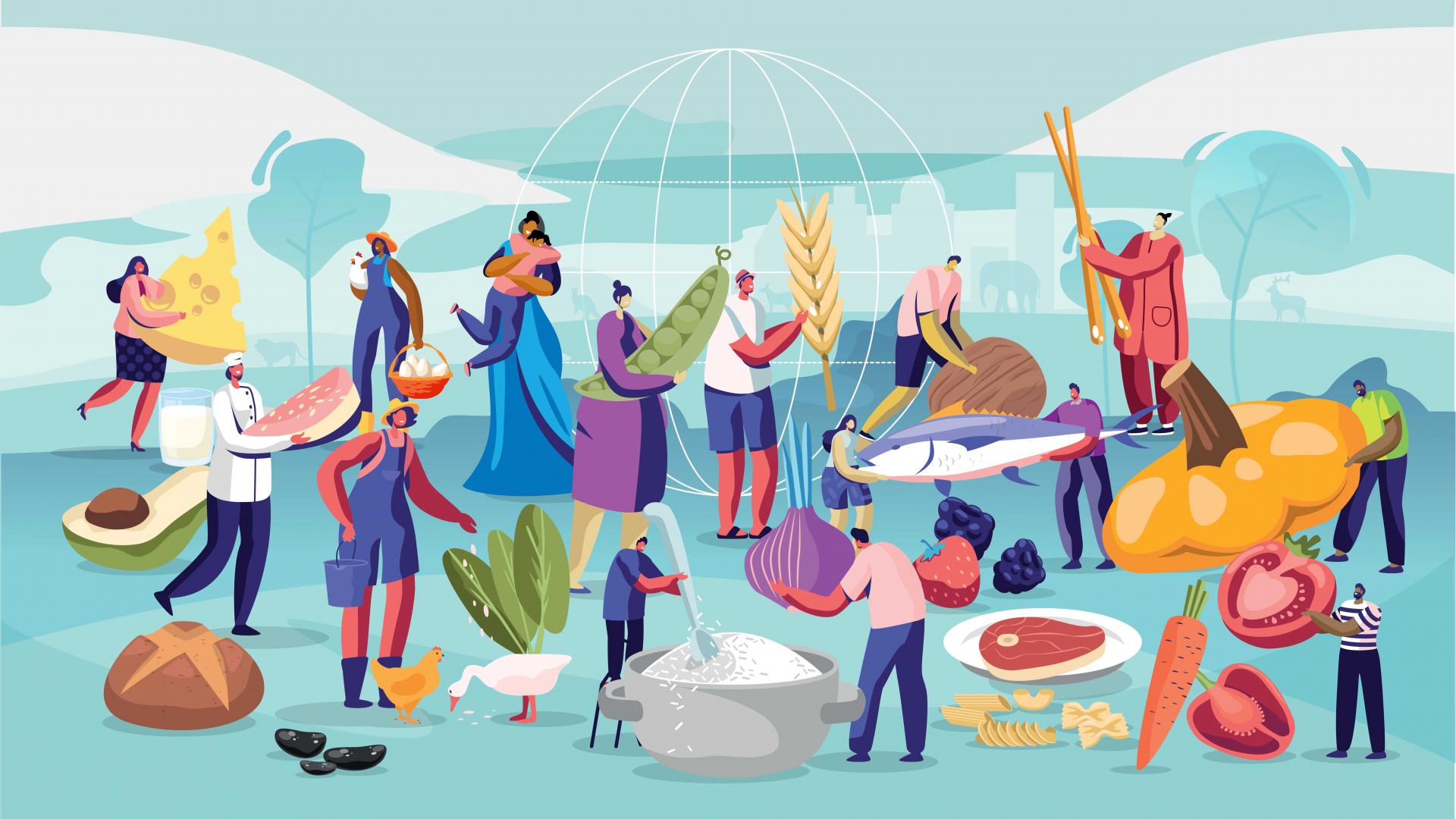Planet-based Diets
Overview
There’s something we can do several times a day to improve our health and our planet’s health. Eating a planet-based diet, high in human health benefits and low in environmental impacts.
What we eat matters… to our own health and to our planet’s health
WHAT IS A PLANET-BASED DIET ?
Planet-based diets are “ win-win” consumption patterns that are high on human health benefits and low on environmental impacts. There’s no one-size fits all solution, but there are common themes.
They:
- Are flexible and can be adapted to local contexts.
- Comprise healthy foods produced within planetary boundaries.
- Discourage over-consumption of any foods and encourage agrobiodiversity.
The food system must nourish people without damaging our planet – but right now it’s failing on both fronts. Nearly 700 million are hungry, nearly 2 billion are obese or overweight and we’re losing nature at a catastrophic rate.
PLANET-BASED DIETS: HIGH HUMAN HEALTH BENEFITS, LOW ENVIRONMENTAL IMPACTS
Planet-based diets will ensure everyone on the planet has healthy and nutritious food and will help bend the curve on the negative impacts of the food system, moving from one which exploits the planet to one which restores it for nature and people.
They will help us:
- Reverse nature loss
- Halt deforestation
- Reduce emissions
- Reduce water use and pollution
- Provide everyone with healthy and nutritious food
There are five strategic actions that planet-based diets can majorly impact:
1. Reversing biodiversity loss One way to reduce biodiversity loss is to increase our consumption of plant-based foods relative to animal-source foods, which will reduce the pressure on agricultural lands to support livestock production.
2. Living within the global carbon budget for food Our food systems are one of the main drivers of global greenhouse gas emissions, accounting for nearly 26% of total emissions. In order to keep global warming at or below 1.5°C, we need to rapidly decarbonize all industries by 2050. This means global emissions have to be halved every decade from now till 2050, while at the same time, carbon sinks have to be massively increased.
3. Feeding humanity on existing cropland We need to use arable land to grow food for human consumption, instead of growing feed for livestock - and that means we need to shift our diets. We don’t have to eliminate animal-source foods from our diets, but we need to ensure they are being reared on natural grasslands instead of being fed with crops grown on deforested lands.
4. Achieving negative emissions Under the Paris Agreement, countries pledged to keep the total global temperature below 2°C. However, the Intergovernmental Panel on Climate Change (IPCC) has found that to achieve this, we will need to use “negative emissions” to remove massive amounts of CO2 from the atmosphere, and store it on land, underground, or in the oceans.
By increasing our consumption of plant-based foods relative to animal-source foods, our food systems will require less agricultural land, enabling society to use land that was previously used for food production for other purposes, such as restoring nature (and capturing carbon).
5. Optimising crop yields We have to adopt significantly different methods of food production alongside dietary shifts, to feed 10 billion people within planetary boundaries. These include agroecological methods such as conservation agriculture, agroforestry, and regenerative agriculture.
ACHIEVING PLANET-BASED DIETS
1. CHOOSE SUSTAINABLE FOODS
Sustainable ingredients have minimal impacts on nature – they are produced responsibly and don’t threaten wildlife populations or their homes.
Species aren’t hunted to critical levels and rainforests or grasslands don’t have to make way for large plantations. Nor do these ingredients pollute water or leave soil less healthy, because they aren’t reliant on excessive fertilizer and pesticide application.
Look for certifications and stamps of approval (like RSPO Roundtable on Sustainable Palm Oil or ASC Aquaculture Stewardship Council), choose local or organic fruit and veg, and look for free-range meat and eggs.
2. EAT MORE PLANTS THAN ANIMALS
One of the best ways to improve both your health and the environment is to increase how many plants you eat relative to animals. Meat, fish, eggs and dairy are all important sources of nutrition and in many places there’s no need to reduce their consumption. Elsewhere however, mainly in richer and more urban communities, it’s possible to increase plant consumption and get healthier.
In any scenario, the meat we do eat should be sustainable – so less intensively farmed livestock, only livestock fed on grass, ideally on naturally occurring rangelands. There are options for farmed fish, but the most important thing is to avoid wild fish which are being overfished.
3. EAT HEALTHILY AND MINIMISE PROCESSED FOODS
The more processed a food is the greater its environmental impact – because of emissions created through the process and because it often loses nutritional quality, meaning more food has to be produced overall, just to deliver minimum nutritional requirements. We will be healthier if we eat fresher foods which are minimally processed/have minimal additives and we won’t need to use as many natural resources for food production.
4. INTRODUCE BALANCE AND VARIETY
Eating too much of any food is unlikely to be good for you or the planet. Our bodies need a variety of nutrients, and the planet also benefits from a variety of food being cultivated.
Soils are healthier when different types of crops are grown together and fertilizer use can be reduced by mixing crops with animals or other plants. A wider variety of foods also means food systems are more resilient to shocks like pests, diseases or extreme weather.
A good balanced diet can include many things but tends to have lots of wholegrains, fruit and veg, and less sugar, oils, fats and meat.

